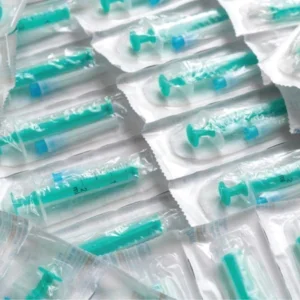When Paul Jansen, global head of medical devices at Sanofi-Aventis began working in the pharmaceutical industry 30 years ago, the most a patient could hope for in terms of a drug-device combination was a vial and syringe. “In the early days, there were drugs and there were devices,” he says, “but nobody thought to combine them to form something that was going to make it easier, more accurate and safer for patients.”
Today, the opposite is true. Combination products, defined by Jansen as “a system that contains a drug in a primary container and a device to deliver it,” are used throughout the pharmaceutical industry. “Very rarely do you see anyone in this day and age launch a product with a vial and a syringe, which would actually be the easiest way to do it,” he notes.
“We are now seeing products being launched in their initial form with a drug-device combination, whereas a combination used to be more about lifecycle management. I think that is a clear indication that the industry understands it is here, and that it is only going to keep happening.”
Heal thyself
What changed? Firstly, patient safety became more important than ever before. “The old system of vial and syringes meant patients had to do the works themselves,” recalls Jansen. “Now the manufacturer does the work and makes it as straightforward and easy to use for patients as possible.”
Secondly, the type of drugs being produced by pharmaceutical companies changed. “In the early days, you were able to make your drug products into a pill or a capsule – something that could be taken orally – with much greater success,” Jansen says. “But over time – and this is continuing to accelerate – we’ve been seeing a move away from the small molecule types of pharmaceuticals towards large molecules, whether they be peptides or biologics.”
Thirdly, a shift took place as healthcare systems around the world struggled under the weight of demographic pressures of an ageing population and rising costs. Patients were moved away from high-cost healthcare settings into their own homes, where they required simple drug-device combinations to keep them healthy.
“In the past, injectable products tended to be administered by healthcare professionals, but that’s changed,” says Jansen. “From a regulatory standpoint, we now need to make sure patients can easily understand how to do administer drugs. Patient populations cover a very wide spectrum so you have to make products that are very simple to use and very safe. This is the trend we have been seeing over the past few years and I think it is going to continue to accelerate.”
As demand grows, successfully launching combination products is crucial. For Jansen, the most important ingredient is producing a device that meets the needs of patients. That might sound obvious, but it requires a great deal of research, he says.
“You have to make the correct assessment. You need to know exactly what your patient population is, you need to know how they are going to operate the device and you need to know what their limitations are.
“If you present them with a device that meets those requirements, there is no reason at all why the launch shouldn’t be successful.”
Take the example of a patient with rheumatoid arthritis. “If a company gives patients a very small, round device, however effective the medicine is, they are unlikely to be able to use it, simply because they won’t be able hold it,” Jansen explains. “You are much better off giving them an ergonomically designed, bigger device that they can grip, because they have very limited mobility in their hands.”
A device should also avoid being “flashy” Jansen adds, and focus on simplicity. “There are always some patients that want to know every little detail about how things work, but for the most part people don’t care,” he says. “They just want to know that they are getting their medicine and that it is helping them. You can put all of the technology that you want into a device but quite frankly what is most important is that it is easy for the patient to understand and that they can rapidly use it without getting confused. Technology transfer is all about the usability rather than putting flashy lights on a device and making it look impressive.”
Having a well-designed device isn’t enough, though. “You can’t have a successful drug-device combination if you don’t have a good drug,” adds Jansen. “You can’t take a bad drug, wrap a device around it and make a drug-device combination that works. You can, however, certainly improve it if you have a good drug and you put it in a good device.”
Department chore
Another hurdle facing pharmaceutical companies producing combination products is government regulation. Not only do those regulations change depending on which market a device is servicing, but also most regulatory bodies in the US and Europe have one department looking at drugs, and another looking at devices. When it comes to combination products, this produces a serious amount of confusion.
“In the past when you submitted a vial and a syringe you only had to go to one part of the group in the regulatory agency to get approval,” Jansen says. “Now, when you have a drug-device combination, you have to establish which of the two bodies is the lead reviewer, and then that agency will have to work with, and get comments and input from, the other agency. The net effect is that everything is much more complex. There are more people involved with different skills, all of whom are required to make an accurate review of the key aspects of the product: safety and efficacy.”
Jansen believes consistency is the key to improving the process. “One agency can give one interpretation and then if you take the same request to another agency you get a different answer,” he says. “Nobody really knows what is going to be required in order to get approval and that slows everyone down, because it increases the need for a lot of meetings and discussions.
“The second point is that there is always a tendency with regulatory agencies to be more cautious and ask for more. The consequence of that is that often you are doing things that you really don’t need to do. The classic example is if you change from one type of drug-device combination to a different form of exactly the same combination.
“Sometimes, the agency will come back and say you need to do a clinical trial. Often, there is no logic in that, though, and it requires millions of dollars to run, all of which costs the healthcare system unnecessary money. So, I think there is a great deal of opportunity there to standardise, simplify and speed the whole thing up.”
Homeward bound
Regulators will certainly need to catch up as the market for combination products grows. The proportion of biologics compared with small molecules on pharmaceutical company pipelines continues to expand – it’s 60–70% at Sanofi Aventis, estimates Jansen – and various parts of hospital care are being shifted to patient homes, opening up space for new combination products.
“Think about all of the oncology compounds that are currently administered in the hospitals and clinics,” Jansen says. “Something as basic as chemotherapy. There are lots of activities under way to move all those treatments out of the hospital and into home care. Think about heparin injections as well. Almost every person who goes into the hospital ends up getting a heparin shot of some sort at the end of their surgery. There is a move to give the initial heparin shot at the hospital, and then send the patient home to do the rest for themselves.”
Pharmaceutical companies are unlikely to stop there, either. According to Jansen the next major frontier for the field will be digitisation. “People are looking at these combination products, which now have devices wrapped around them and they are asking how they can gather data from them and connect them to their ecosystem,” he says. “They want to be able to gather technical information that is needed to help with patient reimbursement, compliance, and helping physicians with recovery and treatment of their patients.”





